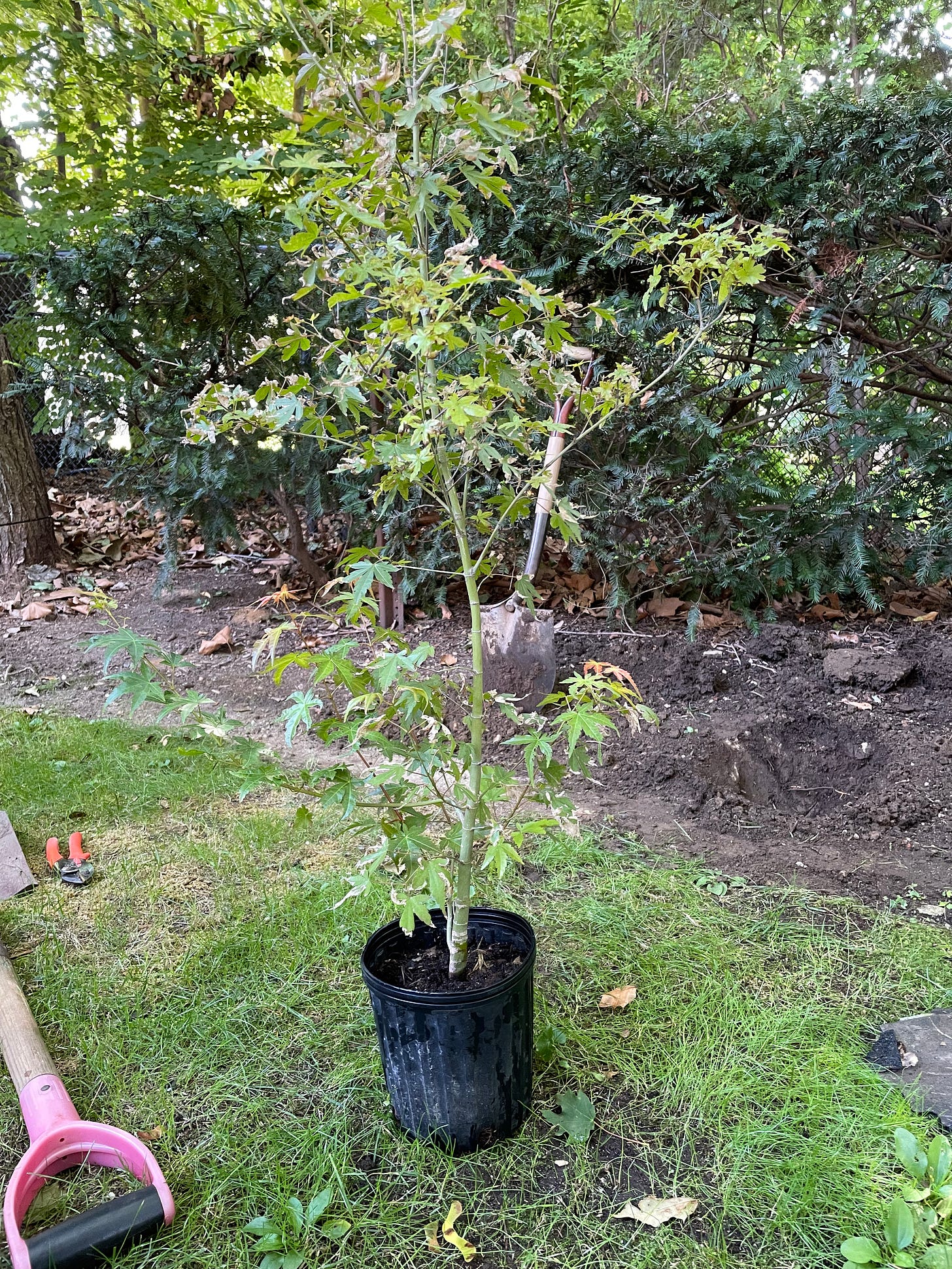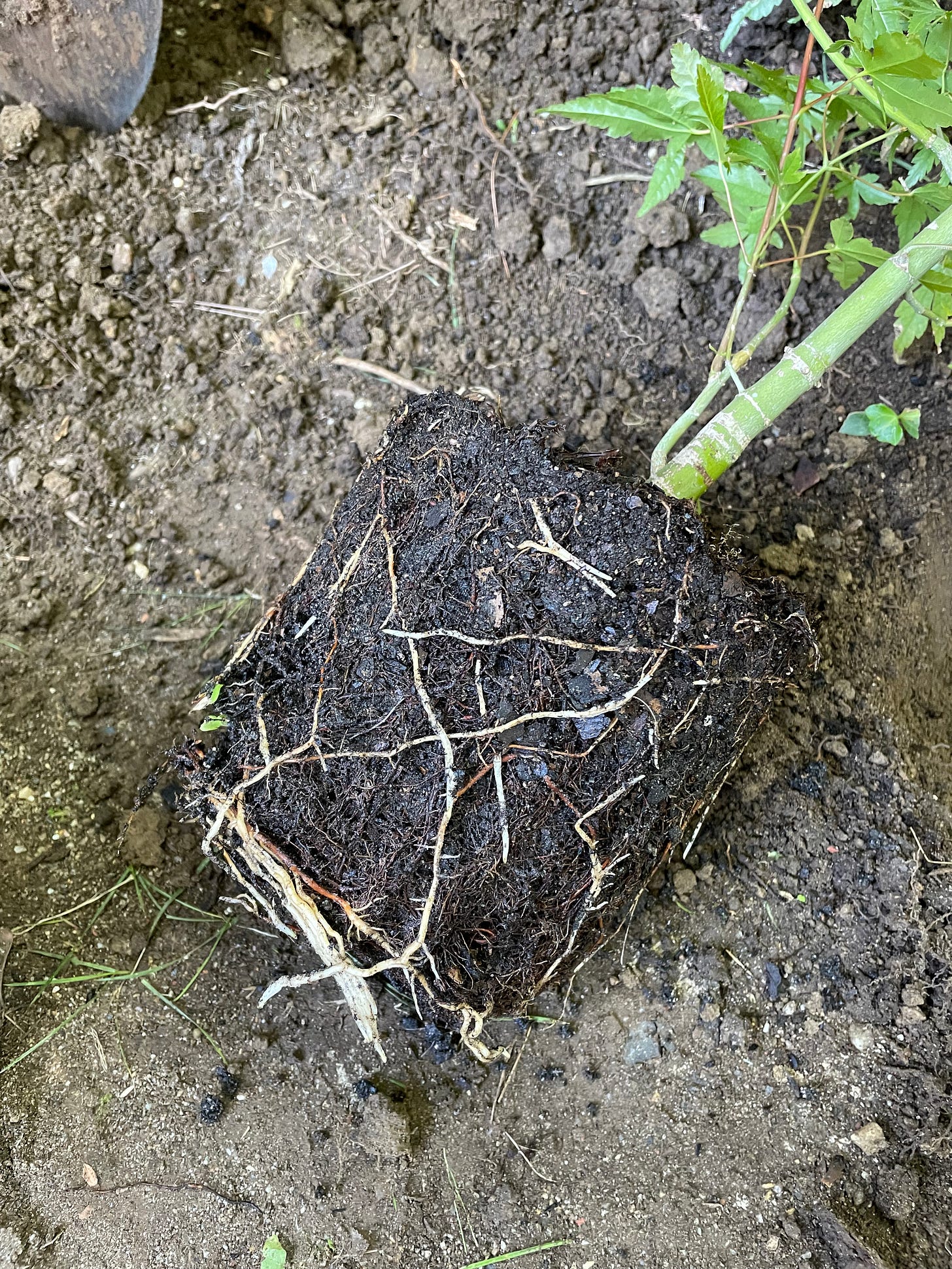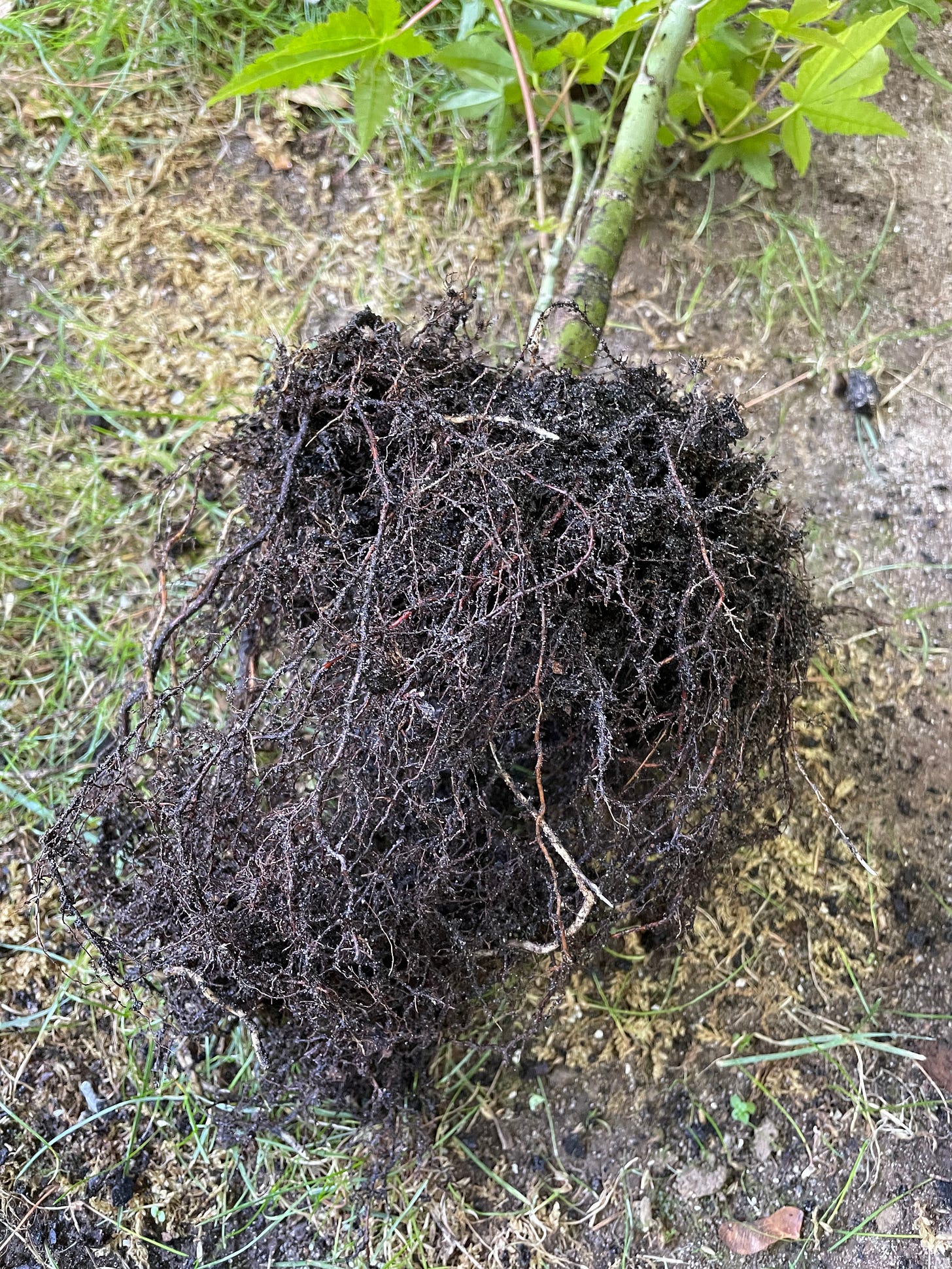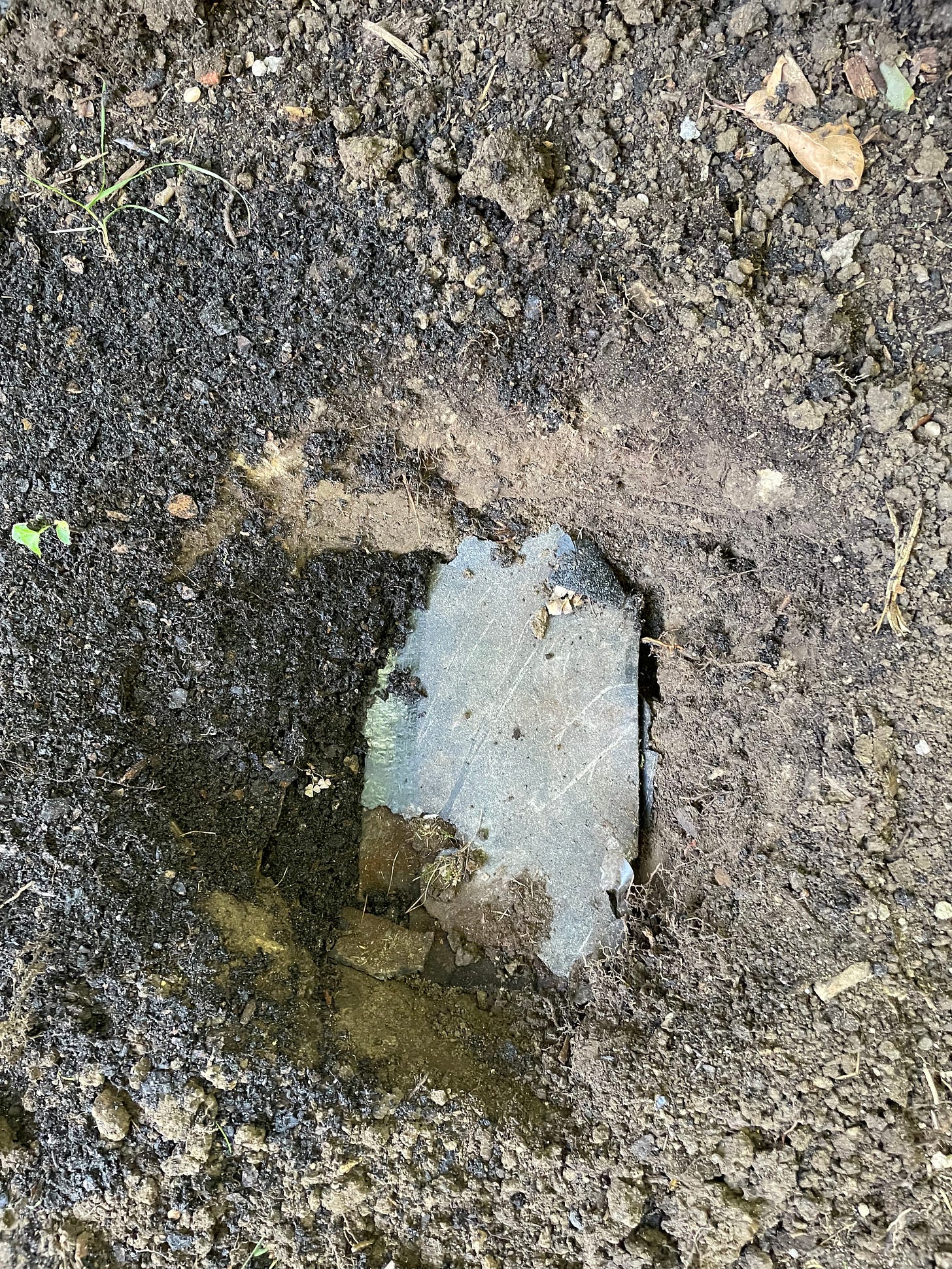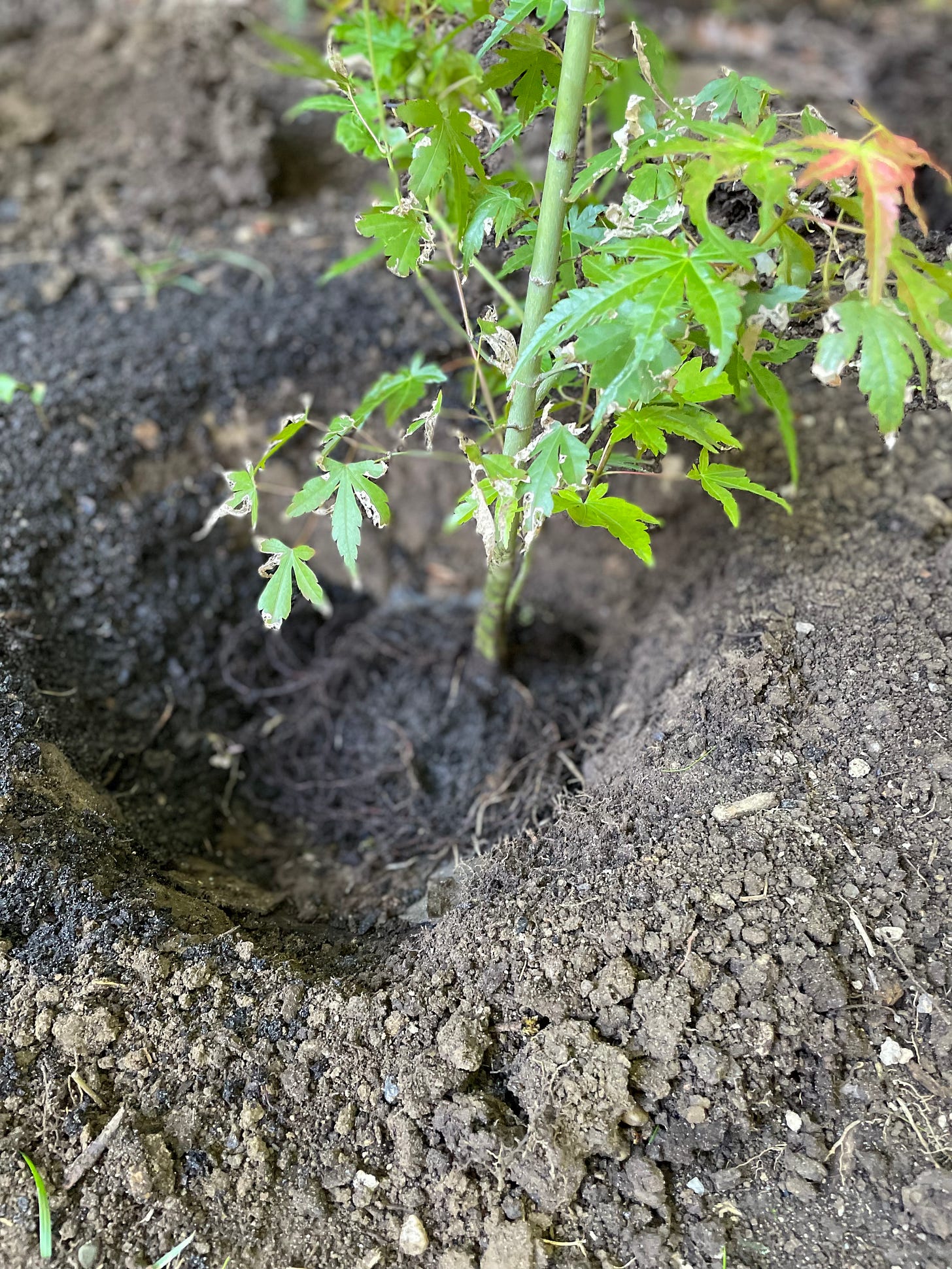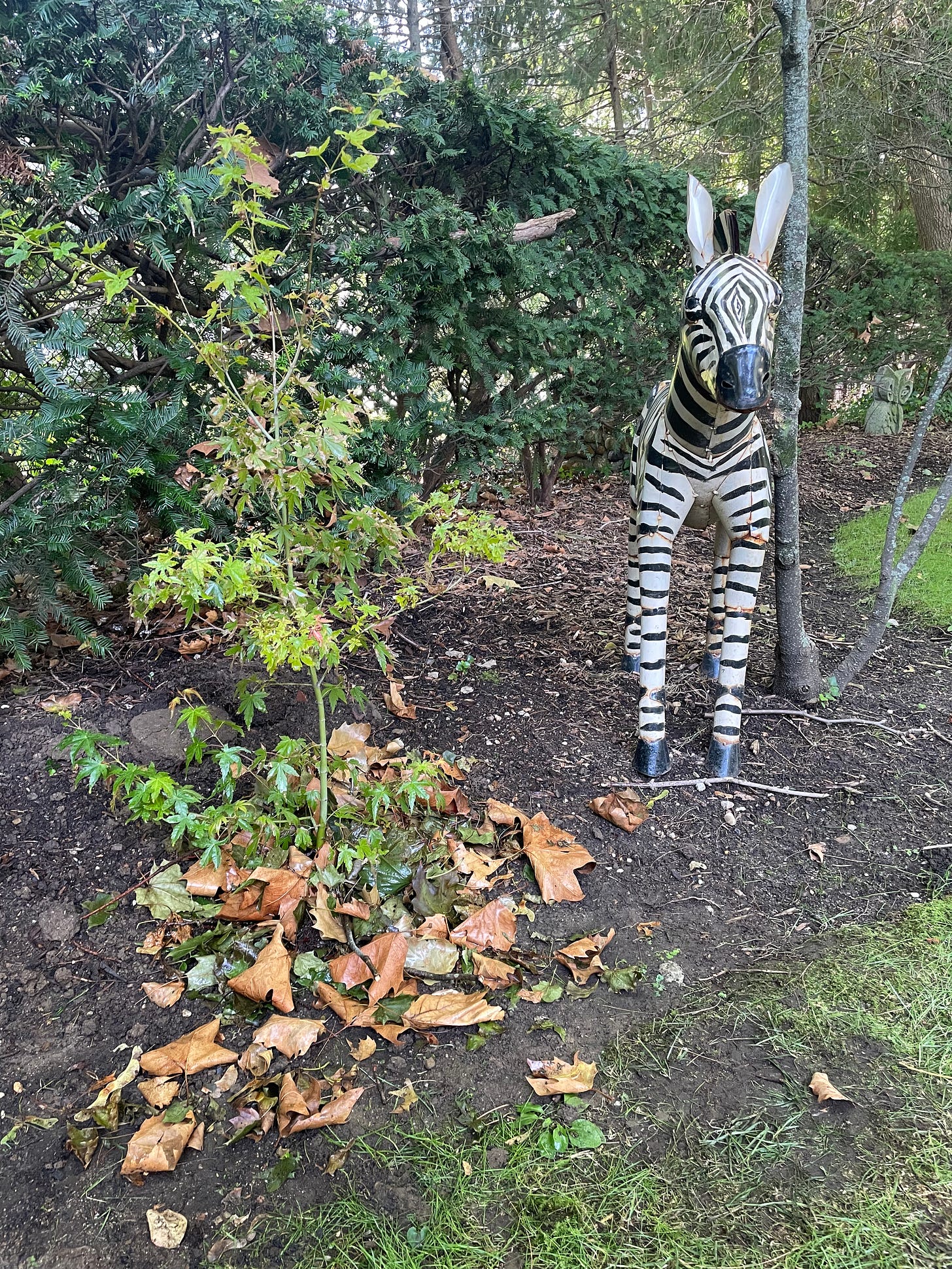Suburban splendor
I'm pulling my maple out of prep school.
My Japanese maple has had a busy year. It thrived through spring and most of summer in the partial shade of my fire escape. Then it got evicted and went to summer camp in my friend Nissan’s backyard. Delicate Japanese maple leaves scorch in full sun, so while the rest of my trees treated Nissan’s house like a spa day, my maple came out vigorous but sunburned.
A few of my trees are too large to fit in the planters at The Queensboro, so they now live at my dad’s in the luxurious Long Island suburbs. Dad and my stepmom are recent empty-nesters with newfound time on their hands—my little sister went off to college this fall—so I’ve put them to work watching the big trees with occasional watering duty. I figure the trees can keep them company. At least my stepmom, who’s the gardener in the family, and whom I’ve tasked with fingering soil on a regular basis to determine when the trees need water.
My maple is decades away from anything resembling a bonsai. First it needs to grow a thick trunk with wide buttressing roots. Since I have the luxury of time—bonsai makes you real grateful to have 50 or 60 more years on this planet—I want to grow it especially thick. The best way to do that is by planting a tree in the ground.
Growing trees in a bonsai pot is kind of like sending them to an elite boarding school. You’ve ripped a tree from its natural environment and forced it to grow in a way it never would in the wild. Gritty inorganic bonsai soils maximize aeration to the roots and allow you to water more generously and fertilize more heavily than you ever could in a landscape. You spoil the tree, giving it every possible advantage to make it as strong and healthy as possible. This is necessary because the dramatic reductions of bonsai cultivation put a tree under serious stress. If it’s not healthy at the start, it won’t survive.
Of course trees were designed to grow in the ground and it’s there that they grow best. The root insulation, unlimited drainage, and beneficial microorganisms in the soil will all help this maple grow faster and more healthily than it ever could in a pot. Instead of prep school, it’s like one of those progressive un-schooling academies where kids don’t receive grades and can set their own curriculum. Which is very much not how people do things in Nassau County, but what the maple doesn’t know won’t hurt it.
After digging a hole for the tree’s new home it was time to inspect the roots. The eBay seller who grew this tree from seed did marvelous work: look at all those bushy fine feeder roots! In the spring I’ll dig the tree up and snip off the thicker ones, but for now all they need is some combing so I can plant them perpendicular to the trunk.
An old shingle at the bottom of the hole will ensure the roots grow out radially from the base of the tree, which will help develop a nice nebari: the lowest point of the trunk that physically and artistically anchors the tree to the soil.
Every spring before buds break, I’ll drive a shovel’s edge into the soil and sever any roots that wander too far from the tree. Then, when the trunk finally reaches an appropriate thickness, I’ll chop it to just a few inches high, which will trigger dormant buds to shoot out new branches, one of which will become the next part of the trunk. Eventually a pre bonsai will form through these chops.
I actually plan to air layer the tree before chopping it. This is a technique where you scrape away a ring of bark around the trunk, exposing the live tissue beneath. Then you wrap a rooting agent like sphagnum moss around the wound and seal it tight. If you keep the ball of moss hydrated, it should encourage the tree to sprout a new ring of roots above the soil. Once those roots are decently established you can chop beneath them to clone your tree. Then I can plant that clone, let it grow, and when it’s thick enough, do an air layer again a few inches up. In theory I could clone a whole brood of maples this way.
But that’s a long way away. For now the tree just gets mulched with fallen leaves from the gargantuan red maples above it. My dad has three in his backyard, and it’s only now that I’m truly appreciating their elephantine stature.
Years ago, dad was looking into installing solar panels on the roof. A rep from a local company told him that in order to get any use out of them he’d have to chop down the maples. They were blocking too much of the sun, the rep said. The panels wouldn’t draw enough power. Of course if he did chop them, the flood of light would raise temperatures enough that he’d have to pump up the air conditioner through spring and summer.
Like all our dads, he chose to leave the thermostat—and the maples—alone.
Tree reading
Trees don’t only share resources with others of their species. This study digs into the relationship between Douglas-firs and paper birches, which trade carbon back and forth through their roots with the aid of fungal networks. In the winter, the evergreen Douglas-fir provides some carbon to the birch to help it through its dormant period. Come summer, when the birch trees’ wide leaves shade out much of the Douglas-fir’s canopy, the birches send the carbon and other nutrients back—and it turns out the greater the shade, the greater the nutrient share. [Plant Ecology & Diversity]
I don’t know why you wouldn’t want a giant chicken-shaped topiary in your town, but apparently the philistines of Fitzgerald, Georgia, did not—enough to vote their mayor out of office. [Wall Street Journal]

